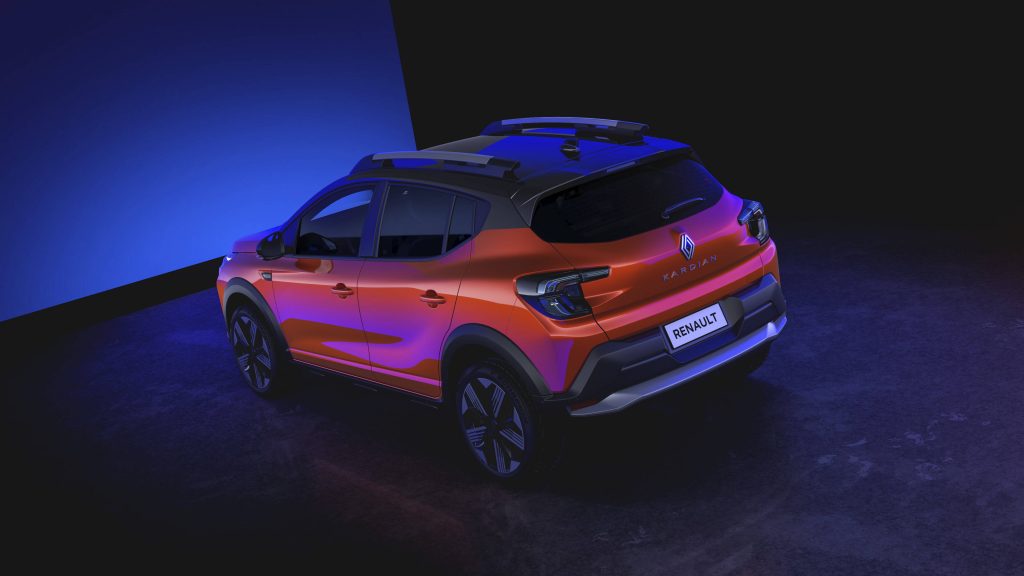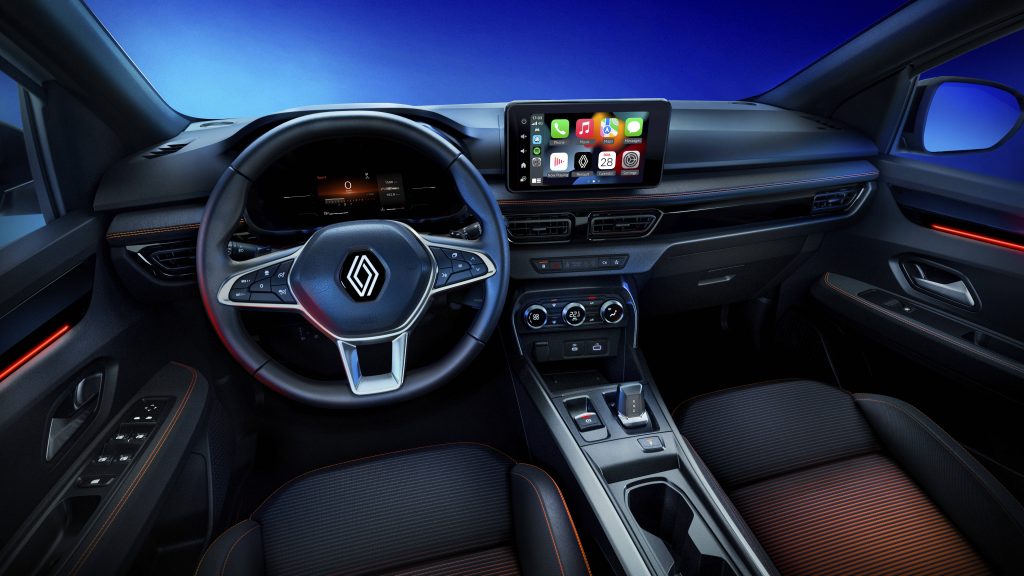Renault has laid out a new “renovation” plan to boost growth in the non-European markets. The new Kardian, which is one of eight products Renault has planned, is a B-segment SUV sporting Renault’s signature design elements.
On the design front, the Kardian takes certain cues from existing Renault models while incorporating a new signature corporate identity. Up front, it carries a large radiator grille with the new Renault logo in between. The grille is flanked by LED DRLs carrying a new signature design and the main headlights sit lower on the bumper. At the rear, the Kardian borrows its tail lights from the Kiger and also carries the centre model branding with Renault logo.


On the inside, the Kardian features a modern dashboard. The centre highlight of the dashboard is a freestanding touchscreen infotainment system, which supports both Android Auto and Apple CarPlay. Other features of the Kardian include 13 ADAS features, multi-camera view, digital instrument cluster, 6 airbags, electronic parking brake and an e-shifter.


Speaking of its powertrain, the Kardian will go on sale in South America first with a 1.0L turbocharged petrol engine. The direct-injection 3-cylinder turbo petrol engine puts out 125PS of power and 220Nm of torque. The engine comes mated to an efficient dual-clutch (EDC) transmission.
The new Renault Kardian sits on an all-new modular platform, which will underpin a range of other vehicles in the Renault lineup for non-European markets. The new compact modular platform, which also underpins the Kardian, can accommodate vehicle lengths between 4 to 5 metres, 4 wheelbase options between 2.6 to 3 metres and 3 different rear lengths.
Furthermore, the new platform can also comply with a range of powertrains, including LPG, hybrid, strong hybrid and E100. The platform also supports both 2-wheel-drive and four-wheel-drive drivetrains. The new platform will be assembled in 4 key markets — Latin America, Türkiye, Morocco and India.

